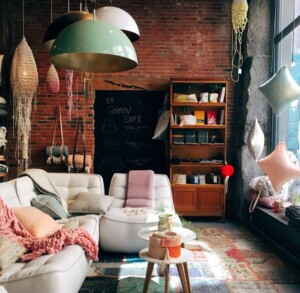
Dive into the world of harmonizing contrasts as seasoned professionals offer expert insights on seamlessly blending maximalist aesthetics with minimalist settings. From compact New York apartments to spacious open-concept rentals in LA, discover in this Redfin article how to infuse your living spaces with maximalist charm while maintaining the simplicity of minimalism.
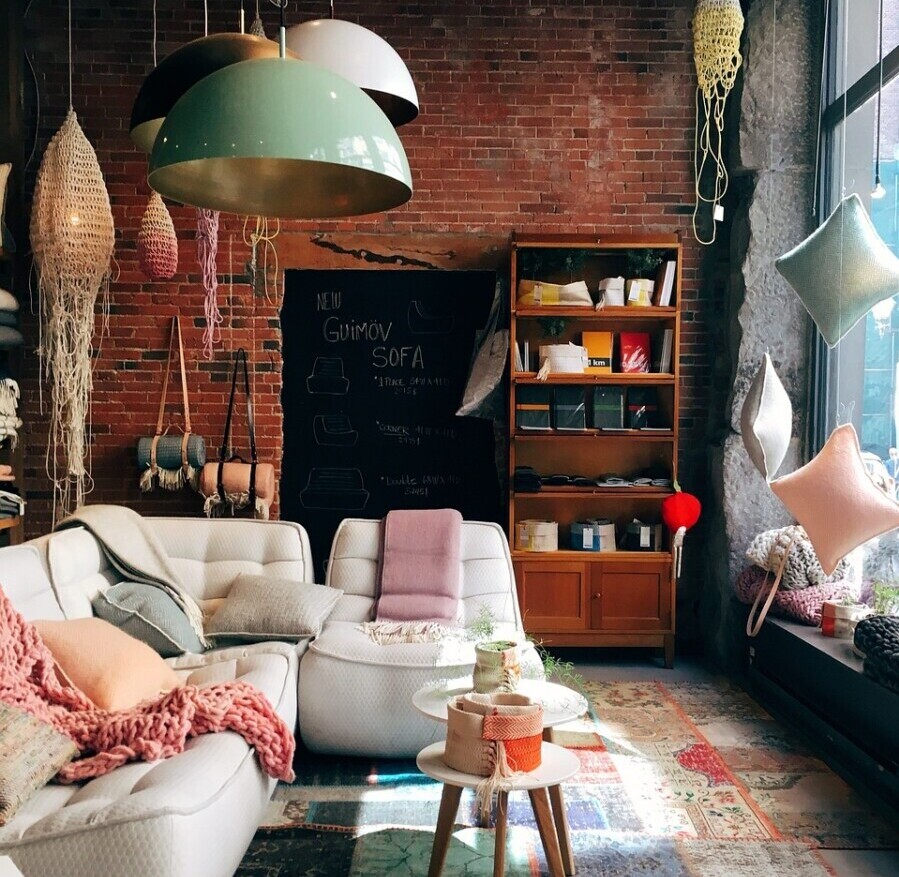
1. Curate and edit
Maximalist design in minimalist spaces involves careful curation and editing. By selecting beloved items as focal points, complementing them with colors and patterns, and allowing for negative space, a balanced and visually rich environment is achieved.
Peti Lau, a high end electric interior designer recommends, “The art of maximalism design in minimalist and small spaces is about curation and editing. You take something that you really love. Be it an art, a painting, a unique piece of furniture or object. Then building a story around this beloved item. What I mean by that is, create a story with this object by making it the ‘star.’ Then adding the supporting roles, layer in colors that complement this item. Introduce a pattern that will play nicely with this item. The key is to add the appropriate scale with patterns. Your eyes and intuition together will communicate to you if it works or not. That’s the editing. Remember to allow negative space, this is where the minimalist plays in. Because negative space allows for moments of breath to take it all in… It’s about curating an environment that is personal and inviting, yet calm, collected and aesthetically pleasing.”
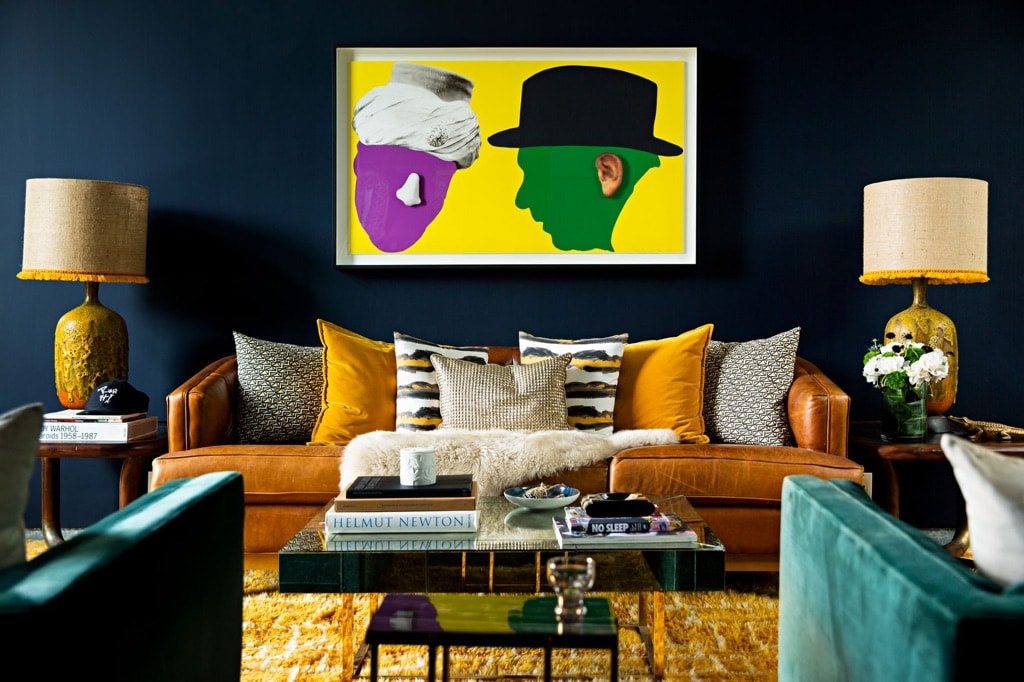
Courtesy of Brittany Ambridge
2. Elevate minimalist spaces with striking contrasts
Maximalist design in minimalist spaces emphasizes bold contrasts for an elegant yet striking aesthetic. It’s about fearlessly experimenting with extremes to create a visually stunning environment that evokes a sense of awe
Steve Adcock from Millionaire Habits shares, “Maximalist designs in minimalist spaces emphasize classy elegance, often with extreme clashes of color and texture. For instance, light carpeting against a dark accent wall or a rough textured backsplash against a smooth countertop. Maximalism is less about creating something to impress people and more about leaning into fearlessness, experimenting with aggressive extremes in a way that makes you go ‘wow’ every time you see it. Remember, don’t fall into the trap of more stuff for the sake of more stuff. The number of items is less important than the impact each item makes.”
3. Use every inch to tell a story
Maximalism in small spaces is like crafting a visual masterpiece, utilizing textures, colors, and collectibles to weave a narrative that enriches the room with personality and depth, rather than merely filling it.
Simon Gorski from Entwurfreich, industrial and interface designer, recommends, “Maximalism in compact spaces is akin to composing a visual symphony—every inch is an opportunity for expression. By integrating layered textures, rich colors, and unique collectibles, we create a space that tells a story. It’s not just about filling a room; it’s about enriching a space with personality and depth, ensuring that every element contributes to a harmonious yet bold narrative.”
4. How to celebrate eclectic style
“Whereas other design styles often embrace restraint and stick to neutral palettes or historical eras, maximalism celebrates the eclectic. Though it may seem chaotic, strategic planning and design principles can yield a space that reflects personality sans clutter,” suggests interdisciplinary artist, Ronya Lake.
“Embrace joy: Maximalism hinges on joy, so start with a bold, joyful choice like a cherished color, whimsical artwork, or a unique thrifted find. This focal point sets the tone for curating the rest of the space.
Experiment: Visualize your ideas through sketches or digital mockups, then build a color palette of two or three hues. Play with pattern mixing, prioritizing variety in scale, texture, and design style while maintaining cohesive color coordination.
Embrace pattern mixing: Pair complex patterns with classic stripes or geometrics, balancing intricacy with simplicity for visual harmony. Use solid color blocks to break up patterns and provide visual contrast, opting for vibrant hues with texture or shine.
Incorporate Greenery: Houseplants inject organic forms and visual interest, enhancing the space with varying foliage shapes and sizes while adhering to sunlight requirements.”
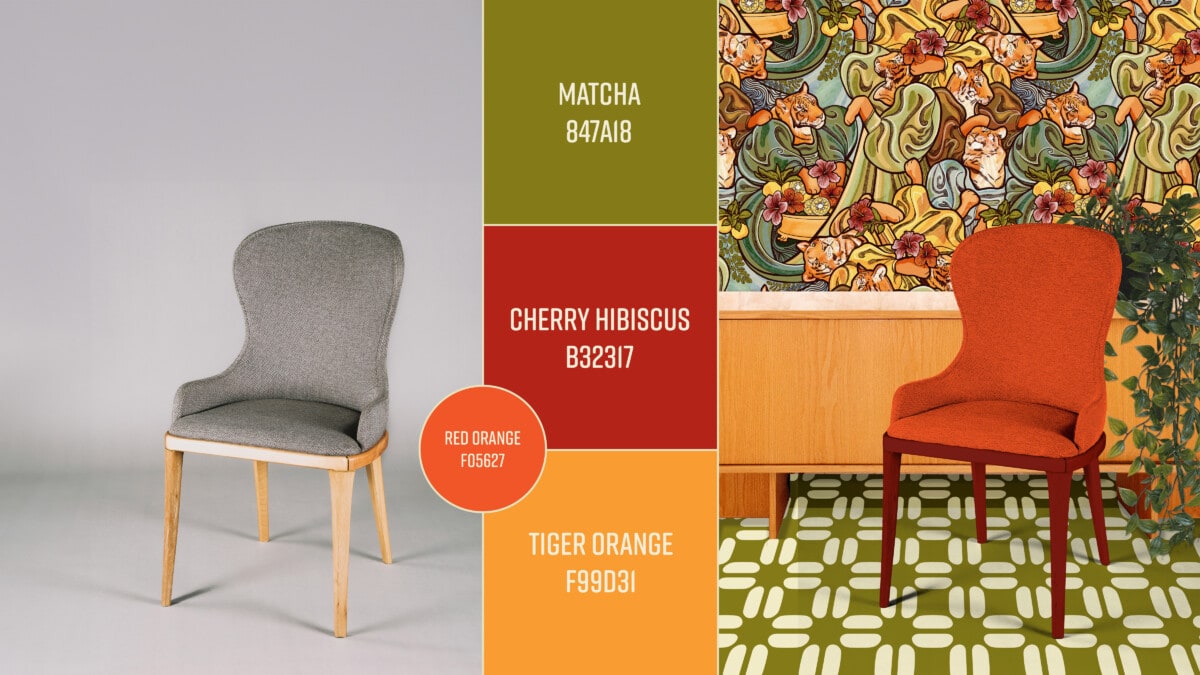
Courtesy of Ronya Lake
5. Decor, furniture, and lighting tips
“It’s hodgepodge, but intentional,” says Adam Pretorius, real estate expert based in Iowa City. “It’s more of everything: lots of color, lots of patterns, lots of layers, more is more. The maximalism design traces back to Versailles and ancient Chinese interiors where layering and detailed rooms were very vibrant. The spaces have a lot happening but everything feels cohesive. This daring aesthetic requires practice to perfect its eclectic design both in knowing what you’re putting together and why. Here’s a few tips:
Décor: Mix art and decorative items to tell a story of your space. Use wall art to trick the eye into feeling that a small room is bigger or airer or that a large room is more intimate and welcoming. Tip: create optical illusions by focusing on the width or direction of lines on your artwork or décor to expand the visual field or create the illusion of smaller or larger spaces.
Furniture selection: More is more but ensure the furniture has function as much as form. For function, go for large pieces such as the sofa or armchairs. You can fill in spaces with smaller items such as side tables, ottomans, and accent pieces. Look for unique designs, patterns or vibrant upholstery. Use different sizes and shapes to create balance such as pairing square objects with round objects. Tip: use the odd-numbers rule in interior design which is the idea that odd-numbered arrangements (vs even-numbered groupings) force the eye to move around more, making the overall setup look more dynamic and less symmetrical.
Lighting: Layer lighting to add warmth and depth to the space. Remember to use at least one of the three types of lighting functions: task, ambient and accent. Tip: have at least five to seven lighting points and use lighting as decorative elements in addition to their lighting functions.”
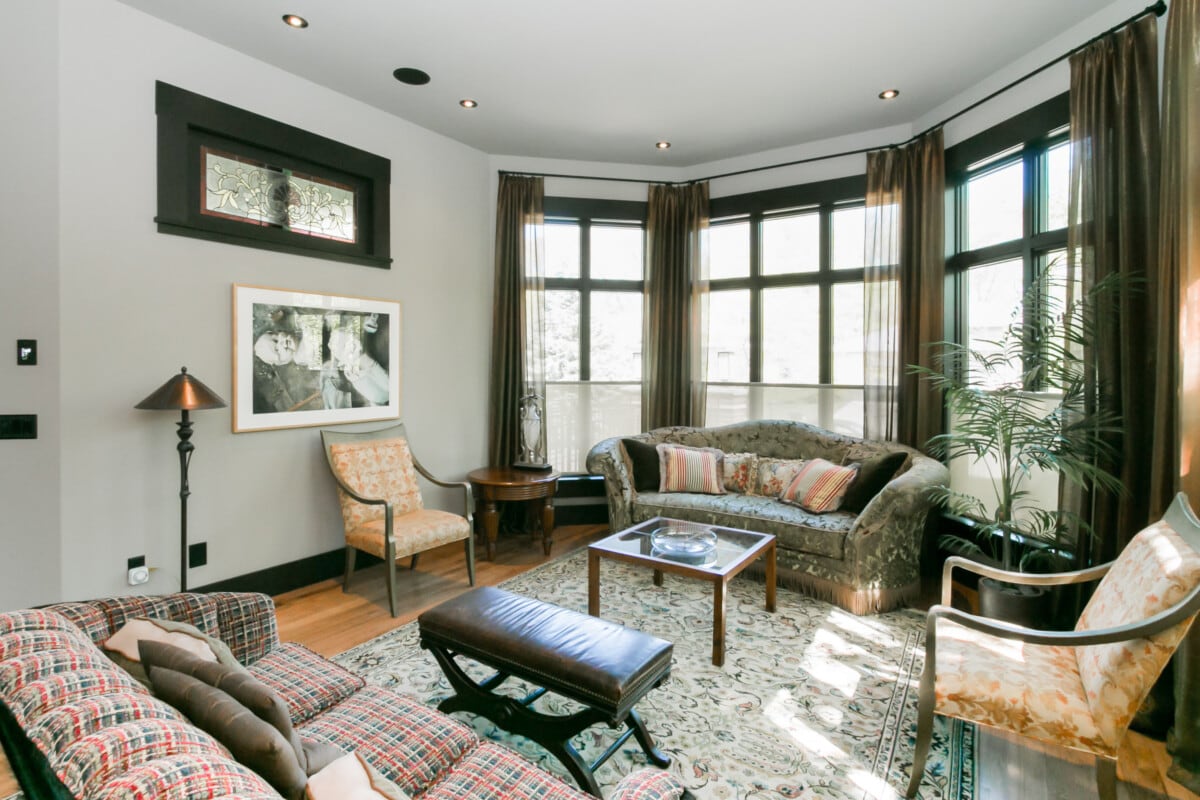
Courtesy of Adam Pretorius
6. Tips on drawing the eye and avoiding crowded spaces
“The essence of maximalism lies not in mere accumulation, but in the artful celebration of abundance, personality, and color,” says Kimberly Co-Founder and Creative Director, Amitābha Studio. Here are some key insights and recommendations for those looking to embrace maximalism within smaller confines:
Vertical space utilization: Maximize vertical spaces to infuse maximalist elements without overcrowding the floor area. Wall-mounted shelves filled with books, art, and memorabilia. Hanging plants or a gallery wall can add personality and interest up high, drawing the eye upward and making the room feel larger.
Curated Collections: Display collections in a curated manner rather than scattering them throughout the space. Grouping items together creates a deliberate focal point and tells a story, adding depth and personalization to the space. This could be a collection of vintage ceramics, an assortment of candles in eclectic holders, or a series of framed photographs or artworks.
Beware of overcrowding your space with too many small items, which can create a cluttered and chaotic environment. Instead, focus on fewer, larger pieces that make a statement. Also, while mixing patterns and textures, maintain some areas of visual rest to avoid overwhelming the senses. This can be achieved with solid colors or simpler textures in between more elaborate patterns.”
7. Create purpose in every space you fill
Art shop and online gallery, Victory Art, says, “We believe that every nook and cranny deserves a splash of color and personality. Here are some tips for compact spaces:
Dazzling statement pieces: Choose a dazzling statement piece, perhaps a captivating painting or a bold sculpture that steals the spotlight. A vibrant, abstract piece that dances with color and emotion – the kind that sparks joy with every glance.
Texture extravaganza: Maximalism loves its textures, so throw in some plush cushions, a faux fur rug, or even a tapestry that tells its own story. A mixed-media masterpiece that combines textiles and paints, adding a tactile element to your space while telling a unique visual tale.
Zonal Delight: Define areas with purpose and panache. Imagine a cozy reading corner with an eye-catching bookshelf adorned with eclectic art or a dining nook where every meal feels like a feast for the senses.”
8. How to maximize a compact space
“When it comes to bringing maximalism into compact spaces, I always say it’s all about being bold yet smart. Here’s the catch: it has to be done with a keen eye for balance and organization,” recommends Adriana Lacy, CEO of Adriana Lacy Consulting.
“Don’t forget about the furniture. In a snug room, every piece needs to earn its keep. Think multipurpose—ottomans that offer storage, or maybe a foldable table that gives you flexibility. It’s also a great idea to utilize your vertical space. Tall bookcases, hanging plants, or even wall-mounted lights can draw the eye up and make the room feel bigger. Mirrors are another trick I love. They can make any space feel larger and more open, especially if they’re positioned to reflect light or an interesting part of the room.
Now, while I’m all for filling a space with everything you love, it’s crucial to avoid feeling overwhelmed. Keep the flow of the room smooth, so it doesn’t just look great but feels great to move around in.”
9. Functional furniture
In a maximalist style applied to minimalist spaces, each furnishing and decor piece must serve a purpose, contributing to the functionality of the compact environment. Every item selected should not only enhance the aesthetic but also optimize the limited space, ensuring a harmonious balance between abundance and practicality.
Soumya Jain Agarwal, Chief Editor of LuxuryFacts, a luxury e-zine, says, “It’s an art to ‘fit’ maximalism into small spaces. Not many people can dare to do that. It’s a tough design aesthetic to achieve in a small environment. Having said that, it can be used to your advantage.
Since you have a limited canvas to play with, each piece that you add to your space should have a meaning or function. In terms of decor, get bold, big pieces to define your walls and corners. They will command attention and become wonderful conversation starters. For example, you bought that big vase from Egypt with hieroglyphics on it? Put it in a highly visible corner. It’s a great story to tell.
Try to use flexible furniture that is also an art piece. For example, dramatic, patterned ottomans with storage inside, or origami furniture that folds and unfolds to create multiple styles of furniture. It not only adds excitement to your space, but also helps keep it neat.”
10. Create zones
Zoning plays a crucial role in maximizing space efficiency and functionality. It involves creating distinct areas within a room, each serving a specific purpose, to ensure optimal use of the available space while maintaining a cohesive aesthetic
“Just enough of way too much,” says maximalist designer and artist, Toby Leon. “Maximalism is about controlled abundance; finding the delicate balance between too little and overwhelming excess. Not sure where to start? Begin small.
Treat your compact space as a canvas for curated vignettes, each nook telling its own chapter in your maximalist story. Create unique narratives in specific zones, adding personality without overwhelming your home. Start with something simple, like mismatched bedside tables, or dive into a gallery wall filled with paintings, prints, and curiosities. For a subtler approach, incorporate touches of metallic, recurring colors, or natural materials for cohesion.”
11. Mixing and layering
By combining contrasting patterns, colors, and styles, maximalism achieves a dynamic and visually captivating environment filled with depth and personality.
Hillary from HCO INTERIORS, a luxury interior designer brand, recommends, “Layering is the key to making a major design impact without overwhelming a small space. Try mixing different patterns and combinations of colors to create contrast and energy in the room.
Another tactic is to embrace dramatic shapes. Using pieces that make a statement and grab your attention can make the spaces feel unique and special. Small rooms offer a great opportunity for bold experimentation with your designs. You have the freedom to try things that may be too much in a large space. Don’t shy away from layering diverse patterns and colors, have fun with the space.”
12. Make a color palette
Establishing a cohesive color palette serves as the foundation for maximalist design, providing a framework for incorporating diverse patterns, textures, and elements into a harmonious composition. “When you are living in a small space it is essential to keep things simple but that doesn’t mean you can’t add some maximalist flair,” suggests Jessalynn Jones, minimalist and declutterer from Doable Simplicity. “Start by choosing two or three colors in the same tone such as jewel tones, neons, or pastels. Then work within that color pallet to choose a collection of artwork for your wall and some luxurious pillows and throw blankets. Use hidden storage options like futons and baskets then add interesting light fixtures and metallic tones to create visual interest without overfilling your space. Mirrors are also a great way to add sparkle to your maximalist small space.”
13. Put your collections on display
Maximalism design emphasizes displaying collections on vibrant gallery walls, while wall-mounted shelves offer space-efficient storage for books, knick-knacks, plants, and art pieces, enhancing the maximalist aesthetic.
Interior designer and lifestyle blogger Taylor Fiske from Flourishmentary, recommends, “Put your collections on display. Create a stunning gallery wall with colorful plates, hats, unique picture frames – or anything else that you love. This is a great way to show off your passions and hobbies while adding that maximalist visual interest and texture we all love. Hang some shelves for decorative storage. Wall mounted shelves are great for small spaces because they can draw the eye up, and display fun items without taking up floor space. You can use them to show off your favorite books, knick-knacks, plants, candles, or art pieces.”
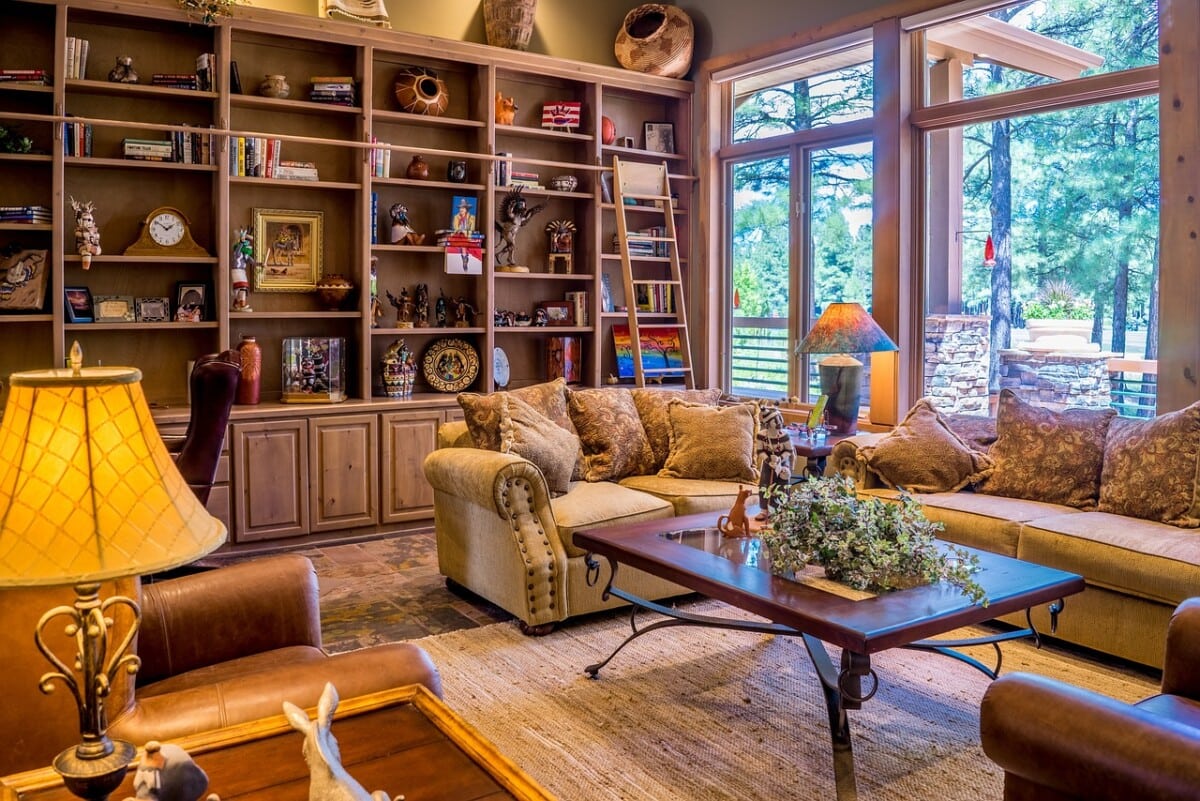
14. Harmonize
Harmony and flow in maximalism design are achieved through thoughtful arrangement of diverse elements, creating a cohesive yet dynamic visual experience.
Noëllie Scherrer Co-Founder and CEO of Mojo Boutique, a stylish and sophisticated furniture seller website, suggests “Maximalism doesn’t mean filling every inch of space. Allow for negative space to prevent the room from feeling overwhelming. This balance is key to creating a harmonious maximalist design. Maintain a sense of flow within the space. Consider how each element connects to the next, guiding the eye through the room rather than creating disjointed areas.”
15. Maximize vertical space
Maximizing vertical space in maximalism design involves utilizing wall-mounted shelves and tall furniture pieces to draw the eye upward, optimizing storage and display opportunities while creating an illusion of spaciousness in smaller areas.
A site that sells unique collections of wall art and prints for any room in the house, About Wall Art, suggests, ‘Utilize vertical space. Maximize storage and display opportunities by thinking vertically. Install floor-to-ceiling shelving or floating shelves to use wall space without cluttering the floor. You can showcase books, plants, and decorative objects while keeping the floor area open and uncluttered. Don’t overlook the impact of lighting in a small space. Use statement lighting fixtures to add personality and drama. Consider a bold pendant light or a quirky floor lamp to draw the eye upward and make all the other pieces shine.
16. Strike a balance, don’t overwhelm the space
Balancing bold choices in maximalist design involves strategically integrating eye-catching elements like oversized textile wall art or eclectic decor, ensuring they complement rather than overwhelm the space.
Women-owned interior design studio, ardisenostudio suggests, “When striving for maximalist design in compact spaces, the key is to maintain a delicate balance between your bold choices. Whether it’s incorporating a striking statement piece like an oversized textile wall art to spark interest or eclectic decorative pieces that add visual intrigue, it’s crucial to keep intention and mindfulness at the forefront. Avoid overcrowding the space by being mindful not to add too many elements that could result in a cluttered look.
A helpful designer tip that I personally swear by when working in small spaces is to maximize the use of vertical spaces. Every square inch counts, so don’t overlook your walls. Consider adding shelving and wall hooks for storage, and opt for multipurpose furniture. Additionally, hanging curtains higher than your windows can create the illusion of height and elongate the space. By embracing these strategies, you can infuse your home with maximalist flair while maintaining an open and harmonious ambiance.”
17. Patient design exploration
Taking your time is essential, allowing for thoughtful consideration of each bold choice and ensuring that the final composition reflects your personal style and vision with coherence and flair.
Jamie, an interior designer at HiiGuru, says, “Maximalism in a minimalist or small space is easy to get wrong, but if you do it right, it can be beautiful. If you’re going to do it, go bold or go home. I think it’s super easy to start to question your choices when it comes to maximalism. But as long as it’s done with vision and intent… the results can be incredible.
Take your time, think about what you want from the space, how you want to use it and how you want to feel in it. Don’t be afraid of strong colors — even if it’s a smaller or darker space. Embrace those things and play on them. I love the drama that a deep, dark color can create in a smaller space; go all in with it and mix textures, patterns and materials to help make the space feel decadent and luxurious.”
18. Feeling connected
Curate pieces that embody self-expression and items imbued with life stories adds depth and narrative to your space, transforming it into a rich tapestry of personal history and eclectic charm.
Akhilesh from Decor8 AI, a interior design app that can virtually fill and re-design your room with a photo, shares, “Maximalism in compact spaces is about creating a cozy and intimate space filled with treasures that speak to your soul. Select vibrant and eclectic decor pieces that bring joy and evoke nostalgia, such as artwork, heirlooms, or souvenirs from travels.
Each item should have a story to tell, reflecting your unique journey and personality. When incorporating maximalism into minimalist spaces, thoughtfully select each piece to contribute to the cohesive narrative. It’s important to embrace your individuality and self-expression when selecting artwork for display. Don’t hesitate to showcase your taste and style. On the flip side, opting for trendy or extravagant items could result in a disconnect and overwhelm in the confined space, potentially failing to evoke the cozy ambiance desired in a maximalist design.”
19. Stability and charm in grounding elements
Grounding colors and pieces play a pivotal role in achieving balance amidst vibrant patterns and bold hues. Larger, anchoring pieces provide stability, while smaller accessories infuse charm, ensuring a harmonious blend of color and functionality throughout the space.
Carmen Smith, Principal Designer at Aquilo Interiors that’s based in Oakland and Los Angeles, shares, “When aiming for maximalism in compact spaces, it’s all about balancing patterns, colors, and functionality. Maintain balance by paying attention to scale and proportion. When dealing with bold patterns, ensure they’re balanced with grounding colors for a comforting yet playful feel. Larger pieces should anchor the space, while smaller accessories add detail and charm. Consider color drenching your walls, where the ceiling, walls, and doors are all painted the same vibrant hue. This adds drama without sacrificing intentionality in your space’s layout.”
20. Integrate drama and narrative using wall art
Integrating vintage and modern pieces in wall art and prints infuses spaces with depth, drama, and narrative richness. By juxtaposing different eras and styles, a unique eclectic charm emerges, creating a captivating visual story that reflects personal taste and individuality.
Carol Willliams from A Simple Tree, a family owned custom picture framing business based out of Charleston, SC, recommends, “Mixing vintage with modern decor elements in picture framing and art can create a unique and eclectic style that adds character and personality to your space. Achieve balance by distributing vintage and modern elements evenly throughout the space. Contrast can be created by placing a modern piece of art in a vintage frame or vice versa. Create a gallery wall with a mix of vintage and modern frames. This adds visual interest and allows for the display of a variety of artwork. Ensure that the frames share a common color or finish for cohesiveness. The key is to express your personal style and create a space that feels harmonious to you.”
21. Room depth
Opting for dark hues on both walls and ceilings can paradoxically amplify the sense of space, creating an illusion of expansiveness and depth within the room. This bold choice absorbs light, minimizing contrast with the surroundings and fostering an enveloping atmosphere that enhances the perceived dimensions of the space.
Multi-passionate creative and entrepreneur, Jennifer Burt from Mississippi Maximalism, suggests, “One of my most favorite ways to bring the maximalism style to a space is to paint the walls a dark color or to use a busy print wallpaper. This tip even goes farther and has more of an impact in compact spaces. People think that dark colors will make a room feel smaller, but it actually makes the walls recede and gives the illusion of a larger space. Just think of how the sky at night looks endless. Wall paper can be an investment, but in a small room, you will not use as much and the effect will be gorgeous.
I like to call the ceiling the fifth wall, so keep in mind that it deserves attention as well. Painting it a dark color can help the ceilings look higher. Likewise, consider your floors and how that is another surface you can use to communicate a maximalist feel. I like the idea of layering rugs to bring in more textures and colors.”
22. Start with the walls and floors
A streamlined approach to starting as a maximalist is focusing first on the walls, windows, and floors. Tachcha LK from Cher Decor, top designer and installer for customized curtains, blinds, and shades, says, “A simple approach to creating a maximalist design in a compact space involves concentrating on the walls, windows, and floors. This strategy encompasses everything from introducing lively colors and decorating with sophisticated art pieces to employing multi-layered window coverings. Additionally, incorporating an elegant Persian handwoven carpet as a foundational element is crucial for achieving a maximalist design.”
23. Reframing your mindset
Reframing your mindset to think like a maximalist involves seeing everyday objects not just as functional items, but as opportunities to infuse your space with personality and flair, encouraging you to embrace creativity and boldness in their integration into your design scheme.
Bespoke interior design studio in Providence, RI, Alison Hammatt Home shares a unique insight, “For me, it is about reframing how we think about the objects and stuff of our life. There is something really elegant and almost luxurious about having your things — maybe your books, your playing cards, your notebooks — readily available. So it is about finding a way to display and arrange your things that is purposeful, clever, and appealing.
For example, you might consider stacking your larger art books on the floor and placing a large table lamp on top. Place an accent chair next to the setup and you’ve got a chic reading — or let’s be honest, texting — spot. Use your things and push the boundaries of what they are and can be.”
24. Experiment with a 3D platform
Utilizing a virtual platform or digital space to create mock designs allows for experimentation and refinement before implementing changes in the physical environment, ensuring a more efficient and effective design process with minimized risks and costs.
SelfCAD, a helpful platform where you can create anything from a simple sketch to a fully-fledged design with end-to-end 3D modeling software tools adds, “3D modeling serves as a pivotal tool in realizing maximalist visions for your space, allowing you to conceptualize and visualize designs with precision before execution. Utilizing 3D modeling software enables the creation of detailed interior concepts, facilitating strategic placement of furniture and décor elements for optimal spatial arrangement. Moreover, it offers the flexibility to experiment with diverse color schemes, textures, and patterns, empowering you to refine your design until achieving desired outcomes. A creative platform with features like freehand drawing and sketching, facilitates intuitive creation of interior designs from scratch or by tracing 2D sketches.”
25. Introduce color with wallpaper and art
Eco-friendly and luxury interior design innovator, BOU INK in Jersey City, NJ, suggests, “Wallpaper for a maximalist design is almost a must, it is the great manipulator. It can trick the eye into thinking a space is bigger or smaller than it actually is, affects the lighting throughout the room, and can bring a sense of cohesion to all of your elements. I am a huge fan of bold prints or large murals. In small spaces, the idea is usually less is more, but don’t be afraid to bring in wallpaper with overscaled and large prints and patterns. You can always simplify the other selections in the rooms, so that the volume isn’t too loud.
Art is another great way to introduce color, texture, and noise into your Maximalist space. Check out your local art galleries for some really unique pieces that you can add to your collection. Meeting local artists and having them create pieces specifically to your color scheme and style is even better.”
26. Mood board
VIEREN’s Founder and CEO, Jess Chow, recommends, “Always start with a focused idea and articulate the look and feel of the overall design with a mood board. When you are confined to a small space, every detail is important and you want to ensure a cohesive and coordinated aesthetic. Having a mood board will help you make defined decisions of what fits within your small space.
While maximalism is about adding, it’s critical to take time to edit. One detail can throw off the entire design – it’s all about finding the right balance. Always look at the design with a discerning eye and ask yourself: Is this necessary? What value does it add? Is anything taken away if it is removed? Asking yourself these important questions can help you create a perfectly curated maximalist aesthetic.”
The post Maximalism in Minimalism: Designers Share 26 Tips for Infusing Maximalist Vibes into Minimalist Spaces appeared first on Redfin | Real Estate Tips for Home Buying, Selling & More.
from Redfin | Real Estate Tips for Home Buying, Selling & More https://ift.tt/DjJTaO3


No comments:
Post a Comment